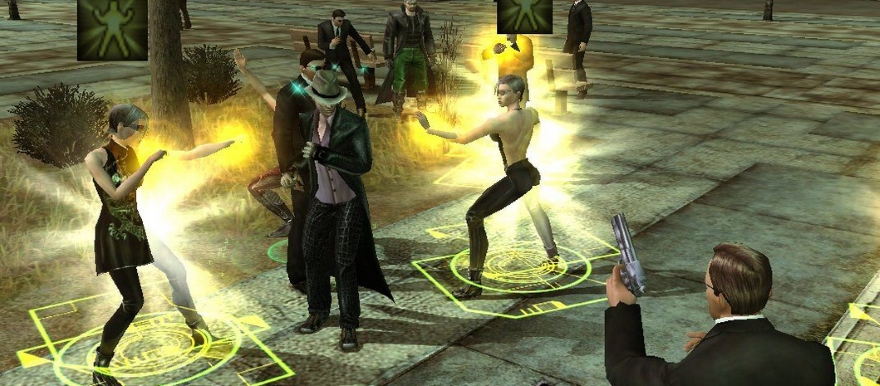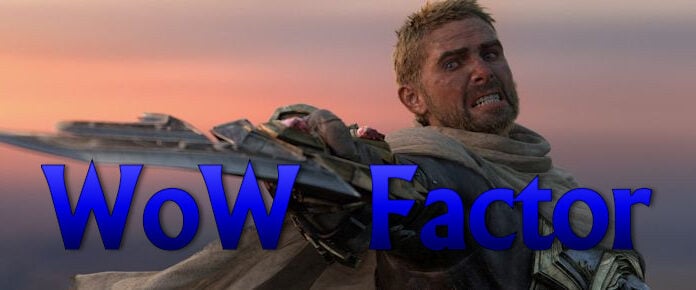
It’s not every year that a movie comes along that captures the pop culture zeitgeist so powerfully and so quickly as The Matrix did. I recall lugging a few college friends along to see this back in 1999 — having heard only a few sparse details about it beforehand — and coming out of the theater feeling as if we we’d been electrified. The bold mix of science fiction, martial arts, philosophy, action, and leather ensembles became the smash hit of the year, and a franchise was born.
And while we had great hopes that this would be this generation’s Star Wars, The Matrix ultimately proved to be a lightning-in-a-bottle phenomenon, impossible to recapture once unleashed. Sequels, animated shorts, video games, comic books — none rose to the height of the original film, and eventually the franchise petered out.
During this period, an odd duck of an MMO was born: The Matrix Online. When you think about it, an online virtual world where people log in and fight against programs was a really short hop from the movie series. MxO, as it was abbreviated, was an audacious game with unique features, story-centric gameplay, and a sci-fi bent in a field of fantasy competitors, and while it only lasted four years, it was enough to make a lasting impression for its community. Today, we’re going to revisit the 1s and 0s of The Matrix Online to see just how deep the rabbit hole goes.
 The story continues…
The story continues…
Instead of simply rehashing the movies by putting players in Neo’s shoes, the dev team decided to continue the story by setting the game in a post-Matrix Revolutions era. When players created characters, it was with the understanding that they were escaping the illusion of the Matrix to begin living the truth.
At this point, all redpills could pursue alliances with one of the game’s three factions: Zion, the Machines, and the Merovingian. Each faction had its own agenda and ideas on how to best handle this brave new world, and the more missions a player ran with one, the lower his reputation would fall with the other two.
As due their status as super-powered humans, players were able to greatly increase their abilities by downloading programs and pursuing specialized classes. Players were also free to experiment with these abilities, as they could be easily swapped out and exchanged for other ones without locking characters into a permanent build.
The Matrix Online boasted two different styles of combat: ranged free-fire (by which players would attack and defend in real time, as in most MMOs) and melee “interlock” (by which two players would be locked together in round-based combat). Just as in the films, everything from kung fu to machine pistols was par for the course.
A rocky start
Given how fixated Matrix fans were with symbolism, they could hardly ignore the bad omens that came during MxO’s launch period. While The Matrix may have been a strong IP back in 1999, Matrix fever had dulled considerably by 2005. To make matters worse, Ubisoft backed out of its deal to co-publish the game with Warner Bros. Interactive, leaving WB on the hook until Sony Online Entertainment scooped up the title from Monolith Productions a few months after launch.
And no matter what we may have wished the game to be, the initial reviews were mixed at best as players had to wade through a myriad of frustrations. These frustrations included buggy combat, a dearth of quest content, glitchy graphics, server lag, an unweildy interface, and low population, all of which contributed to a less-than-stellar reputation. Still, all was not lost — at least, not right away.
 Storytime
Storytime
The greatest hook for the game was that the developers placed a huge emphasis on adding to the films’ tale. Instead of being “B-canon” or an “extended universe” type of deal, The Matrix Online was promoted as an official continuation of the storyline, with input from the creators of the series, and its missions proved more substantial than the petty tasks of most MMO “quests.”
This story was designed to draw players into the game on a daily basis through the use of live events, cinematics, and critical missions. The team even included a group of dedicated virtual actors who would assume the roles of Morpheus, the Oracle and other Matrix celebrities, creating stories in real time for players to experience.
Lead Developer Ben “Rarebit” Chamberlain said that this interaction with players was his favorite part of the game: “I think as a game designer I was very, very fortunate, because there can’t be many designers in the industry who get to go and interact and play the game with their players on a daily basis, at least not in an official story capacity.”
As the team shrunk later on in the game’s lifespan, MxO players stepped up to assume these roles as volunteers. These stories would become one of the most fondly remembered aspect of the game and an interesting experiment with developer-generated live content. And the brunt of the responsibility and drive for keeping MxO going was left to Chamberlain: “In the end I was doing all the writing, mission design, quest design, character design, texture design, live event design and execution, item design, etc. I also had to fix as many bugs as I could that were left in the old designers’ and artists’ work. Basically, I was doing everything that happened with the game that didn’t involve actual programming.”
The end of all things
For many, the fate of The Matrix Online was as inevitable as it was tragic, with the game shuddering to a halt on August 1st, 2009. SOE cited low subscription numbers — as few as 500 remaining players — as the reason it was pulling the plug on MxO, and there’s no doubt that the game struggled to remain profitable in those last months.
By the time this happened, Chamberlain had already left. “When I found out that the game was going to be canceled, I thought I could keep working away at it, making the best of it and all, but then I found my heart had really gone out of it, knowing that the company wanted to end it,” he said. “So I suppose you could say I made the best of that situation by quitting.”
Producer Daniel “Walrus” Myers wrote a bittersweet letter to the community when the announcement came, stating, “Now we’ve seen how far the rabbit hole goes and it’s time to wake up from that dream (or go back to sleep, depending how you look at it). On July 31, 2009, we will be jacking out for the last time… It has been a good run. Where many games have fizzled out before or shortly after launch, by August we will have lived on in our home at SOE for more than four years. To this day, I have never worked with a community as dedicated as The Matrix Online community.”
The final days were marked by ominous eyes in the sky, players being gifted with insanely powerful abilities, and (of course) lots and lots of dancing. When the end came at last, player characters crumpled into tiny balls as a popup box urged them to “Wake up!”
And in that moment, many fans echoed Switch’s last words in the movie: “Not like this… not like this.”
 Believe it or not, MMOs did exist prior to World of Warcraft! Every two weeks, The Game Archaeologist looks back at classic online games and their history to learn a thing or two about where the industry came from… and where it might be heading.
Believe it or not, MMOs did exist prior to World of Warcraft! Every two weeks, The Game Archaeologist looks back at classic online games and their history to learn a thing or two about where the industry came from… and where it might be heading.














